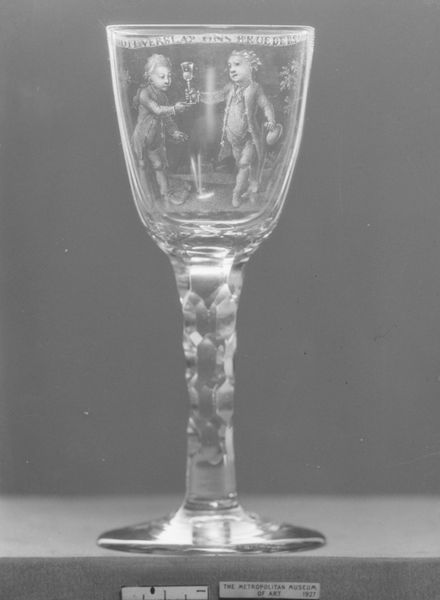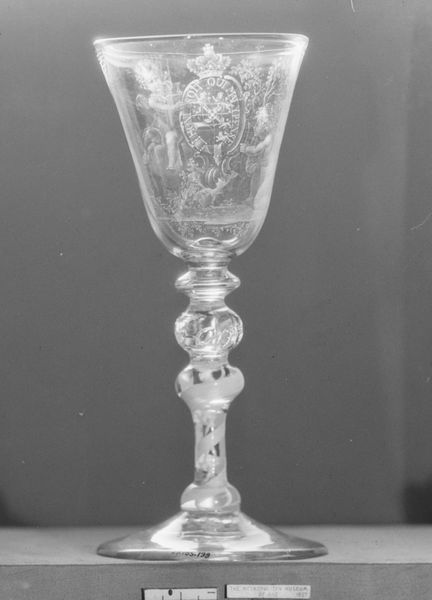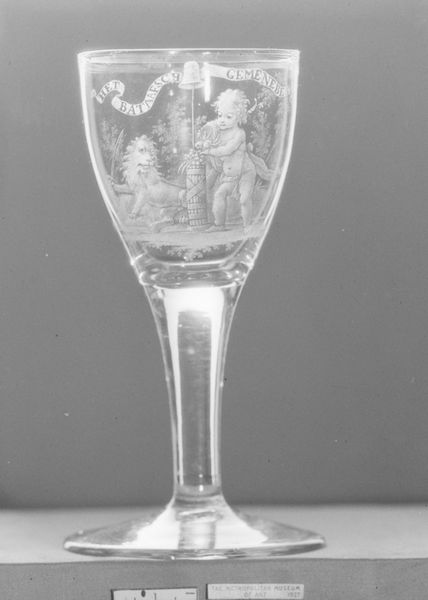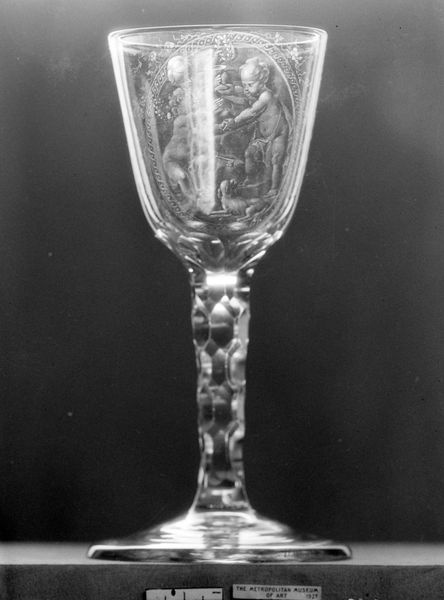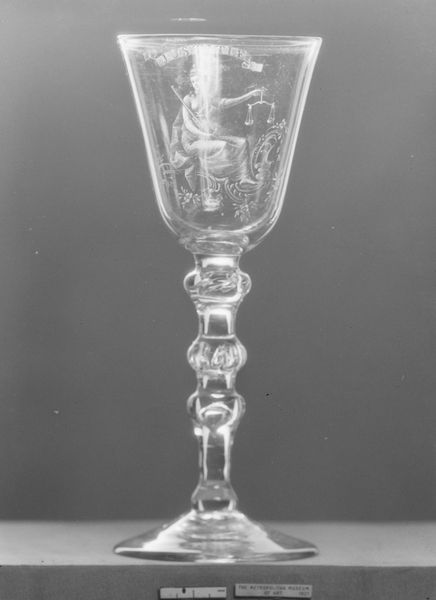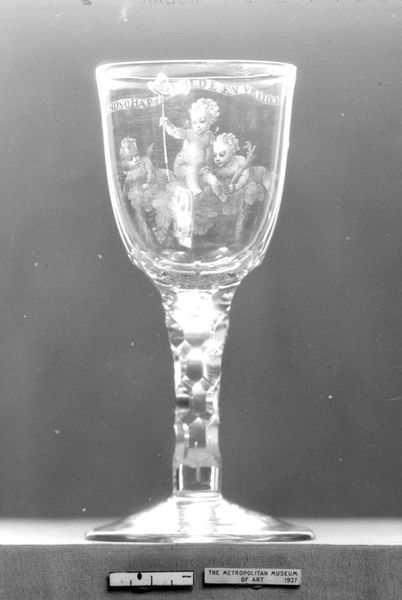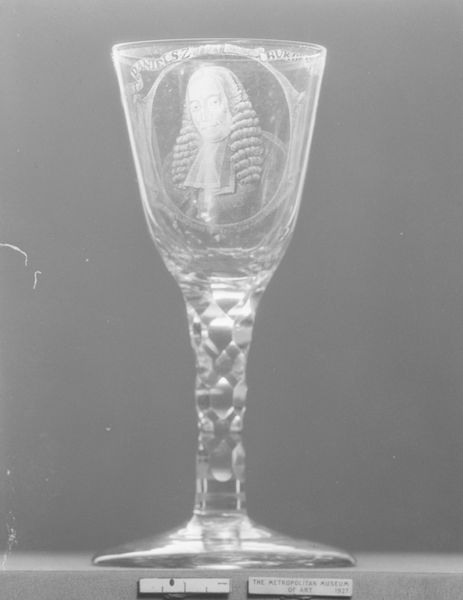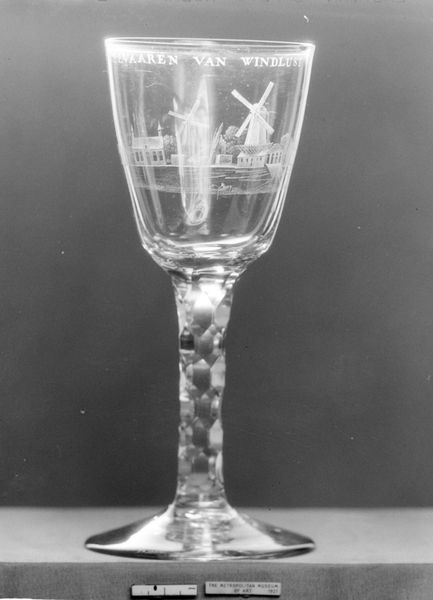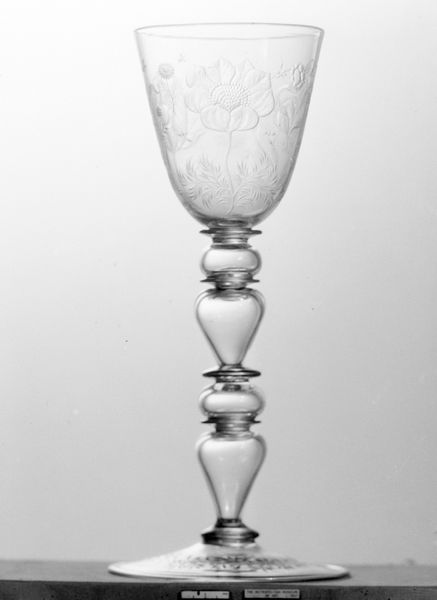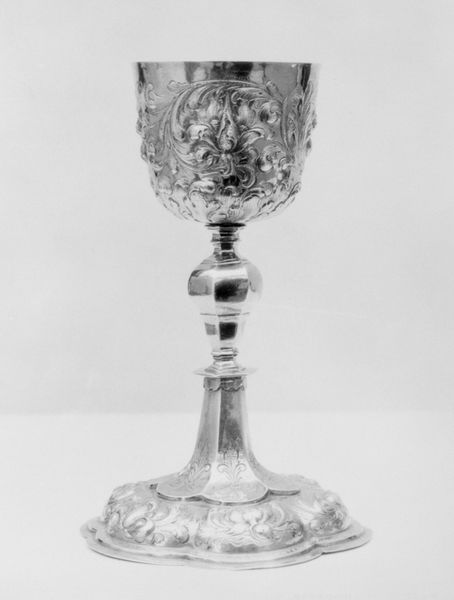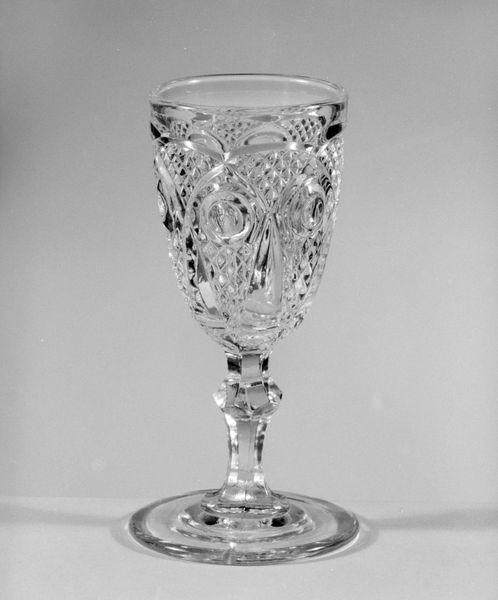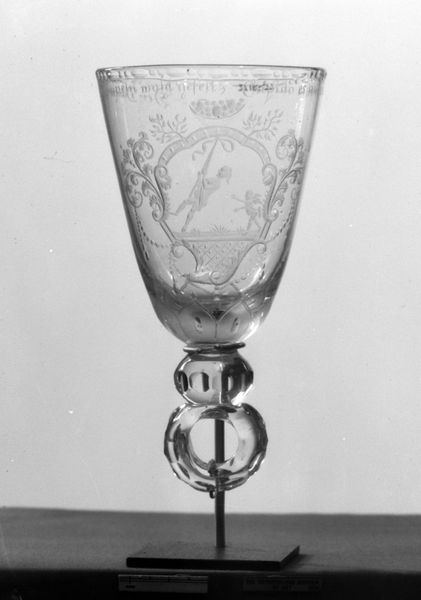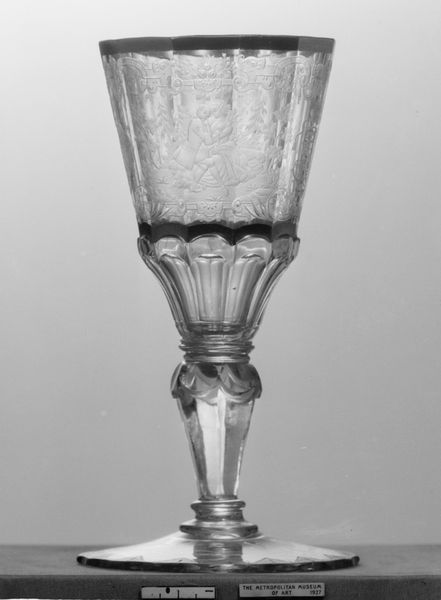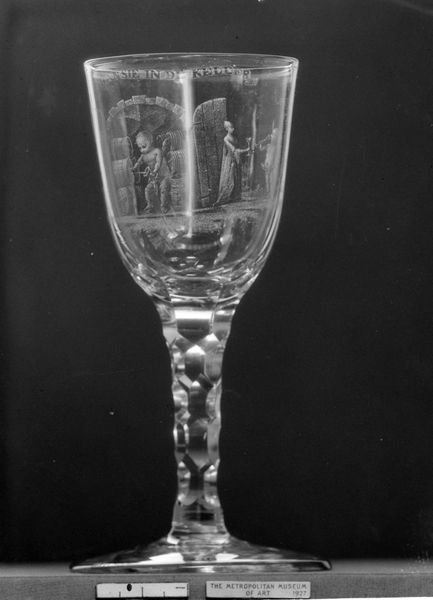
Dimensions: Overall: 7 3/8 × 3 in. (18.7 × 7.6 cm)
Copyright: Public Domain
Editor: Here we have a Wineglass dating from 1775 to 1790, currently housed at the Metropolitan Museum of Art. It is glass, with some engraving. The stem has these geometric details, and there is an image of a group of people... What are your thoughts when you look at this piece? Curator: The delicacy of the Rococo period often masks its underlying engagement with social structures. I wonder how this wine glass functioned within the elaborate rituals of the late 18th century. Drinking wasn't merely a casual act, was it? It was a performance, deeply tied to class, gender, and even political allegiance. Who do you think was using this wineglass? Editor: I would guess someone fairly wealthy. Why do you ask? Curator: The figures engraved on the glass, engaged perhaps in leisure, were most likely representative of those in power. Glass itself would have been an item of luxury, reflecting status, privilege, and wealth at the time. In thinking about the construction of identity, we could consider how objects of luxury worked as tools of distinction. Editor: So the glass becomes not just a drinking vessel but a marker of identity? Curator: Precisely. Moreover, examining the social history around alcohol during the period opens new interpretations. What rules governed its consumption and by whom? Was drinking also a site of subversion? Do you find yourself asking such questions? Editor: I hadn’t thought of that exactly, but I appreciate knowing that everyday objects can give us glimpses into understanding political relationships. Curator: It's a powerful lesson: to read artworks not just as aesthetic objects but as complex documents embedded within socio-political narratives.
Comments
No comments
Be the first to comment and join the conversation on the ultimate creative platform.
